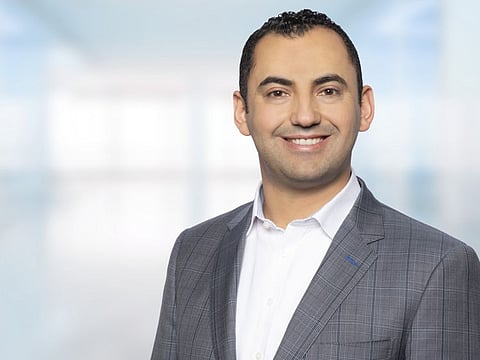Innovative technologies help combat Covid-19
Cerner’s Middle East and Africa MD says Covid has highlighted the value of joined-up data

Alaa Adel, Managing Director –Middle East and Africa at Cerner, talks about the impact of Covid-19 on healthcare delivery and the measures the company has taken to support clients during the pandemic.
Following the outbreak of Covid-19, Cerner has updated its electronic health record (EHR) platform by expanding its telehealth capabilities and implementing disease-screening tools. How are you using EHR optimisation to deal with the pandemic?
Cerner has been working closely with clients in the region to optimise our clients’ EHR systems with the most recent and applicable developments and implementations from across the globe. This includes operational readiness, screening, testing, treating, monitoring, and public health surveillance. The optimised solutions cover each health organisation’s requirements to respond to the pandemic.
As a part of its EHR optimisation, Cerner’s clients are now able to access updated population health management dashboards that help track trends and manage patients who have tested positive for coronavirus symptoms.
From EHR to telehealth solutions, Cerner has expanded its technology to meet the needs of clients delivering care during this critical time. Cerner also launched a dedicated resource site giving clients access to new and updated offerings. This site is a testament to the true global collaboration on practices, pathways and knowledge content between Cerner and clients.
As one of the health information technology market leaders worldwide, how do you think this pandemic will affect healthcare delivery in the future?
The doctor-led approach of healthcare in most countries has been swept away in a stroke. Within a few short weeks of the onset of Covid-19, patients have found themselves interacting via apps, online tools and video conferences, in many cases, with a more responsive approach. Telemedicine and virtual care have become a new vital tool in healthcare that clinicians and patients truly value during this pandemic. We believe this will become the new norm, rather than the exception.
The value of joined-up data and interoperability across a population has been highlighted by this pandemic. It’s crucial for the care providers to be able to see full records, and have a greater sense of previous conditions, treatments and potential infection risk. The value of being able to open data up to both give and receive from third parties that operate in an agile way to create smart, condition-specific apps and analytic algorithms will be seen as a vital way to deliver care.
Digital has been at the forefront of the battle against the coronavirus; it’s just not acceptable now to say that paper will do or that interoperability isn’t necessary. There will be increasing questions asked about scalability to add beds and users, reconfigure facilities and even stand-up new hospitals. Systems will be expected to be more elastic to handle those unforeseen loads.
How do you think organisations will approach population health management and healthcare infrastructure?
The Covid-19 pandemic has exposed the walls within global health and care systems, both between acute-care providers, government and other stakeholders in public health. It has also exposed the growing importance of population health management and mobility. The pressing need to see patterns and infection rates has encouraged decision-makers to take a more realistic view about the use of personal data for the greater safety of all.
Healthcare is not primarily a hospital-based activity and the pandemic has highlighted this fact to a broader audience, who may request to take greater personal ownership of their health and well-being in the future.
With true population health records, it will become easier to identify and protect the vulnerable or at-risk populations, including the elderly, those with chronic diseases and underlying health conditions. In addition, a better understanding of this population’s mobility and living arrangements will allow the brakes to be released in an intelligent way.
Sign up for the Daily Briefing
Get the latest news and updates straight to your inbox



